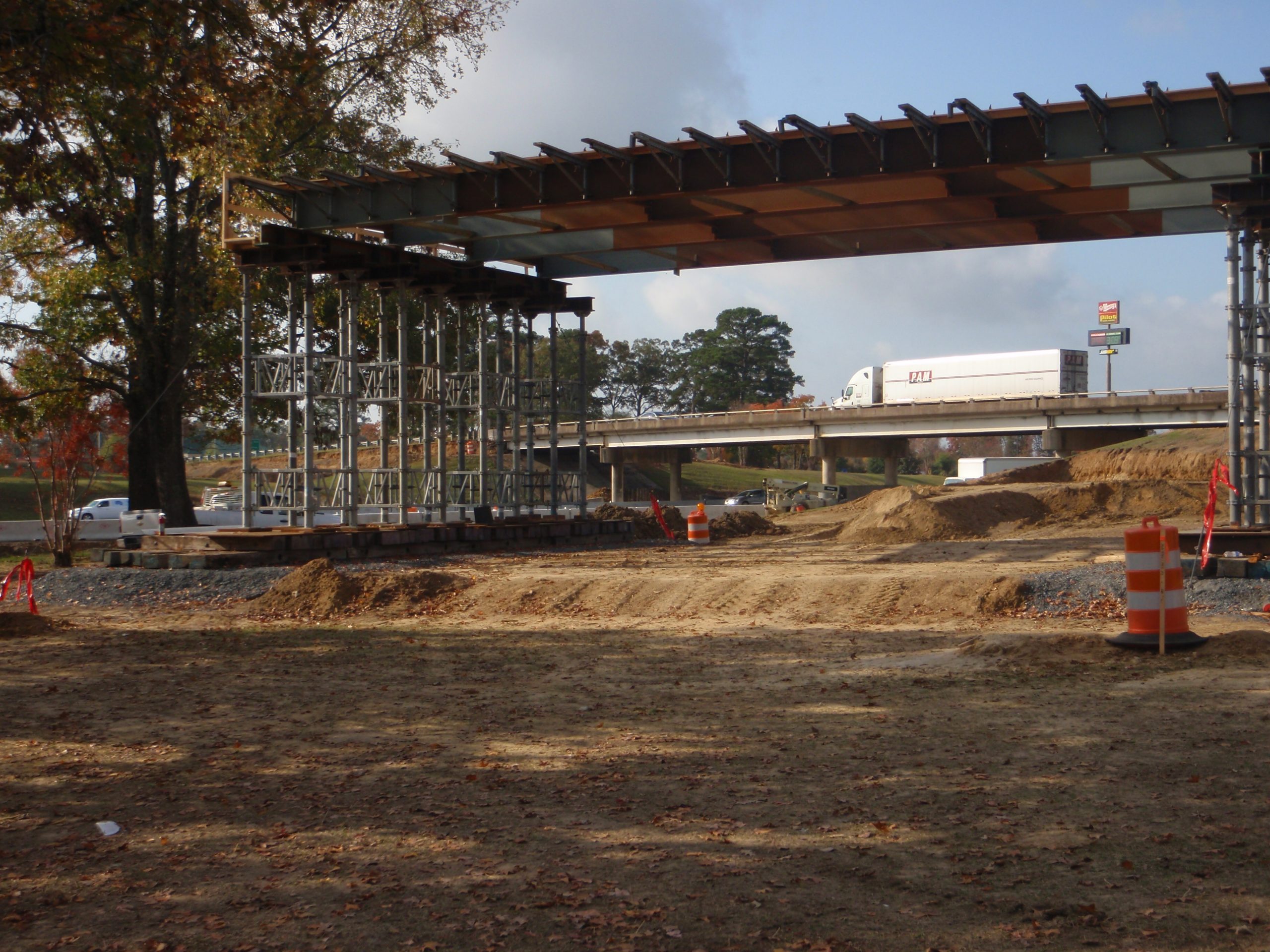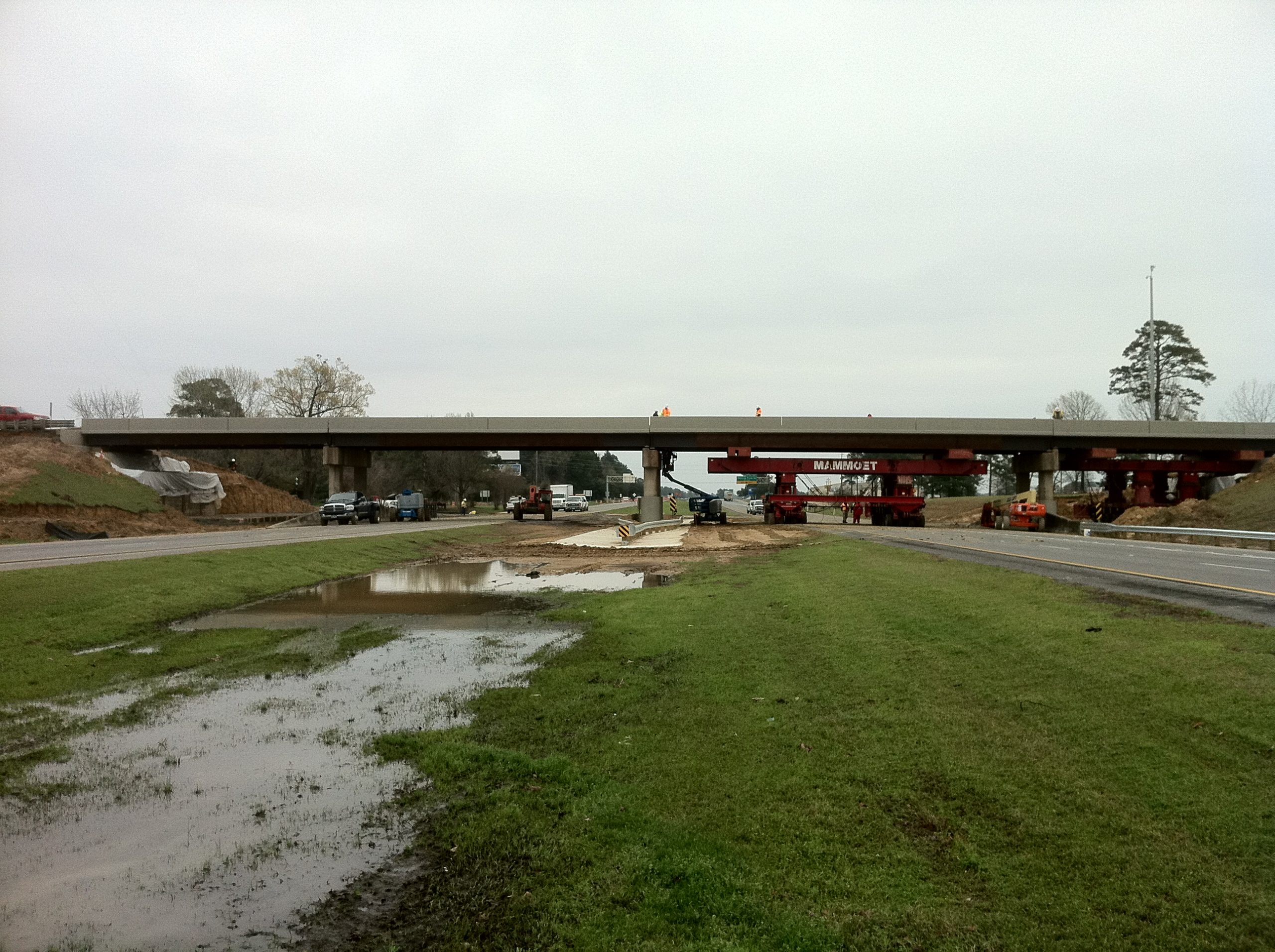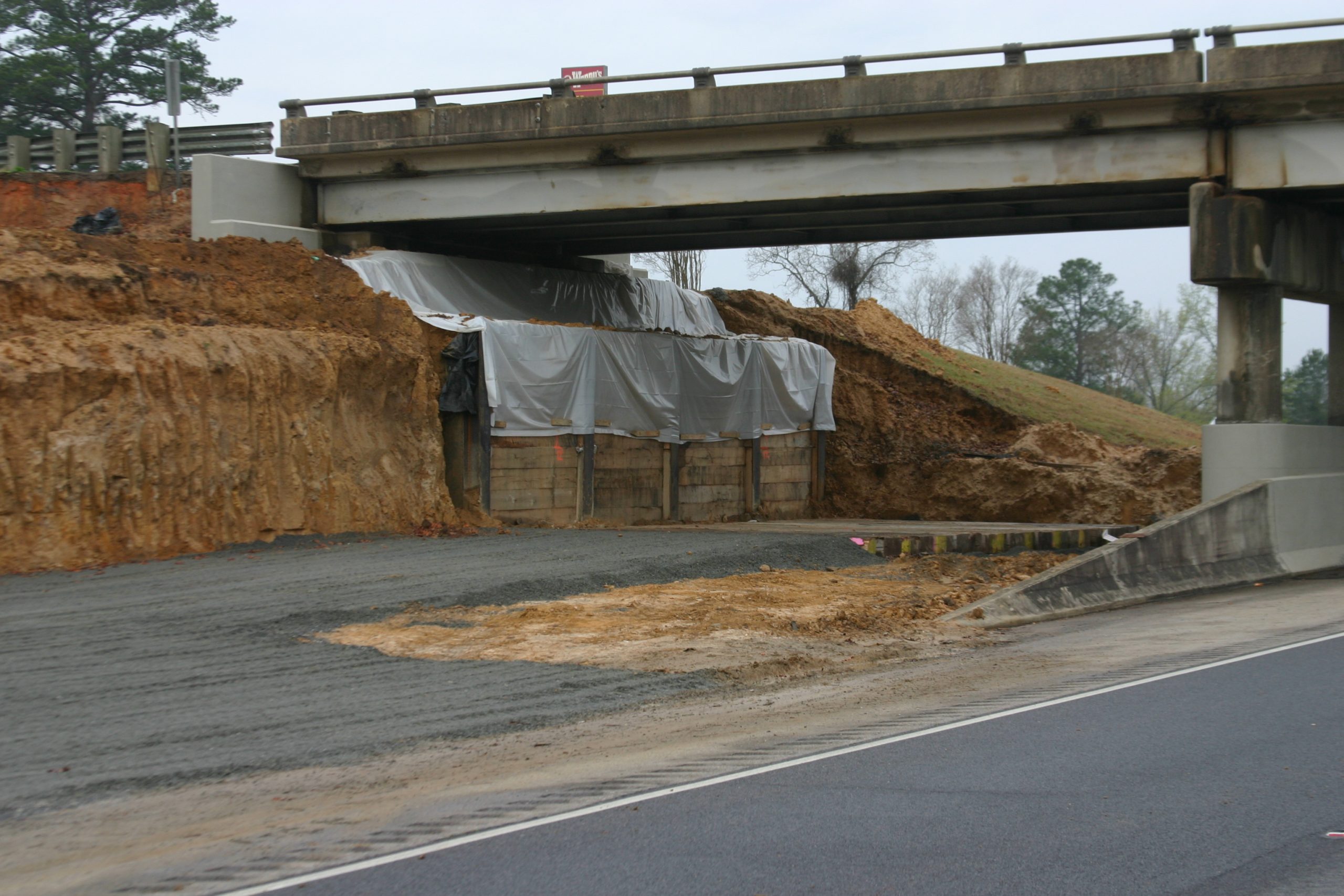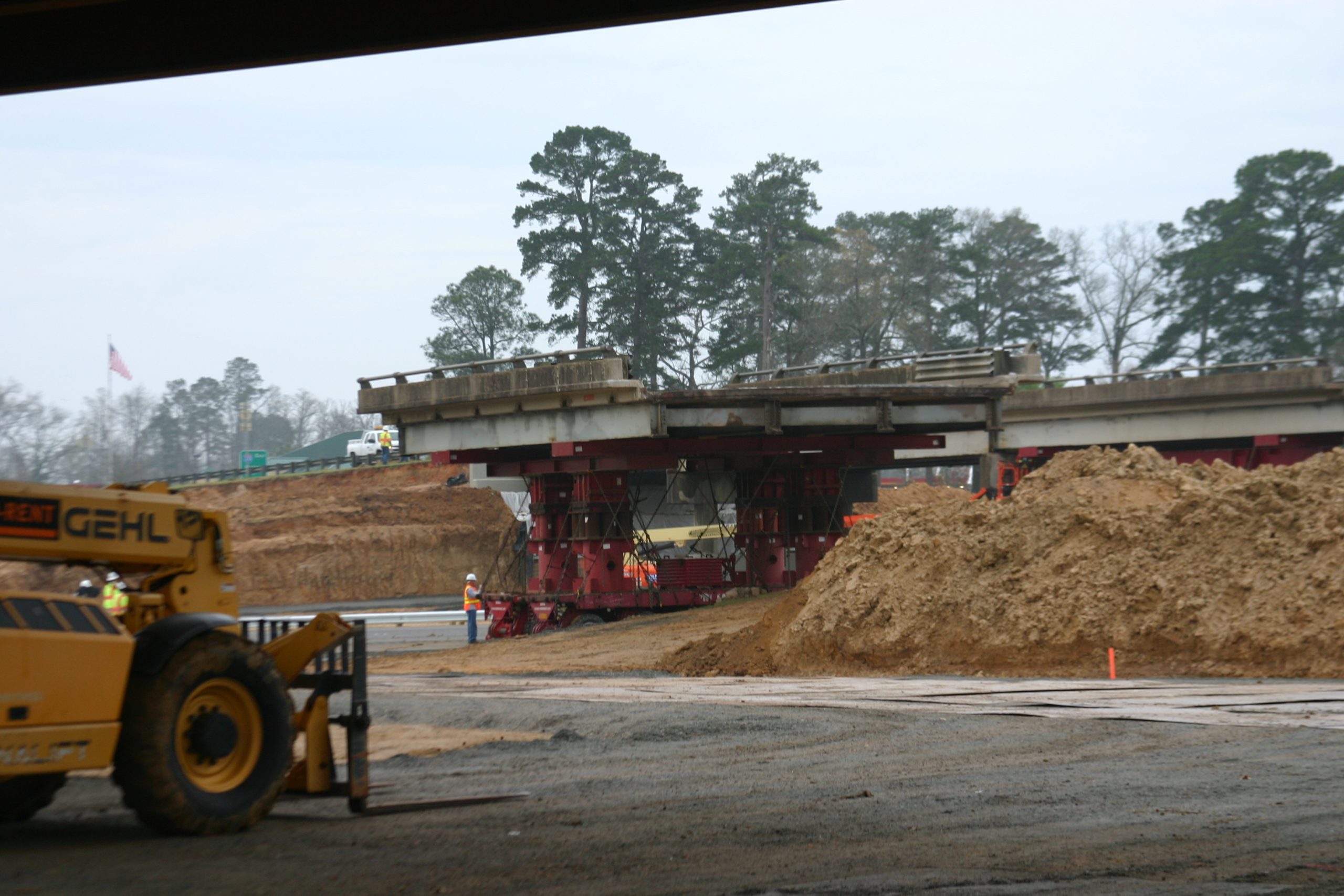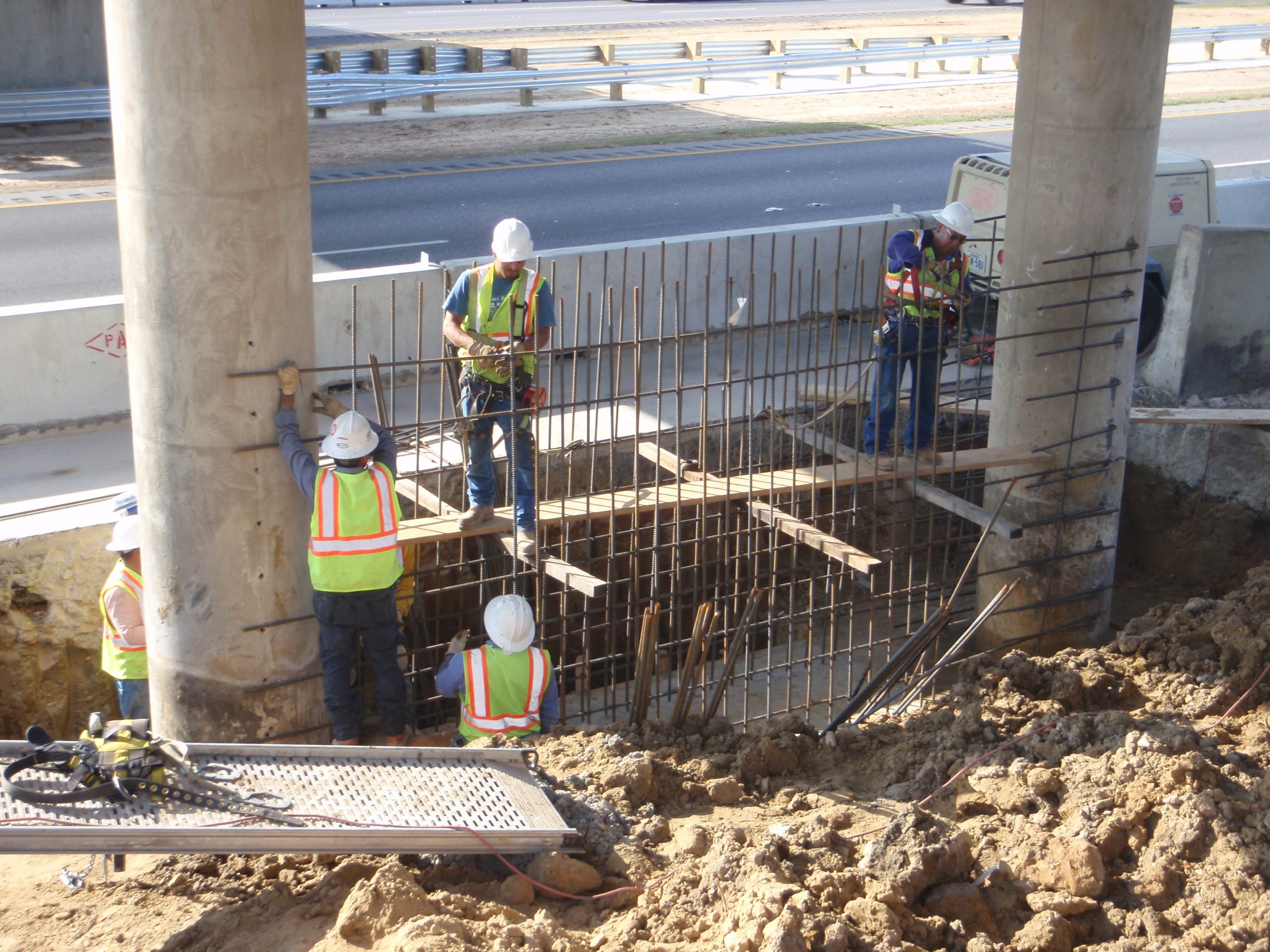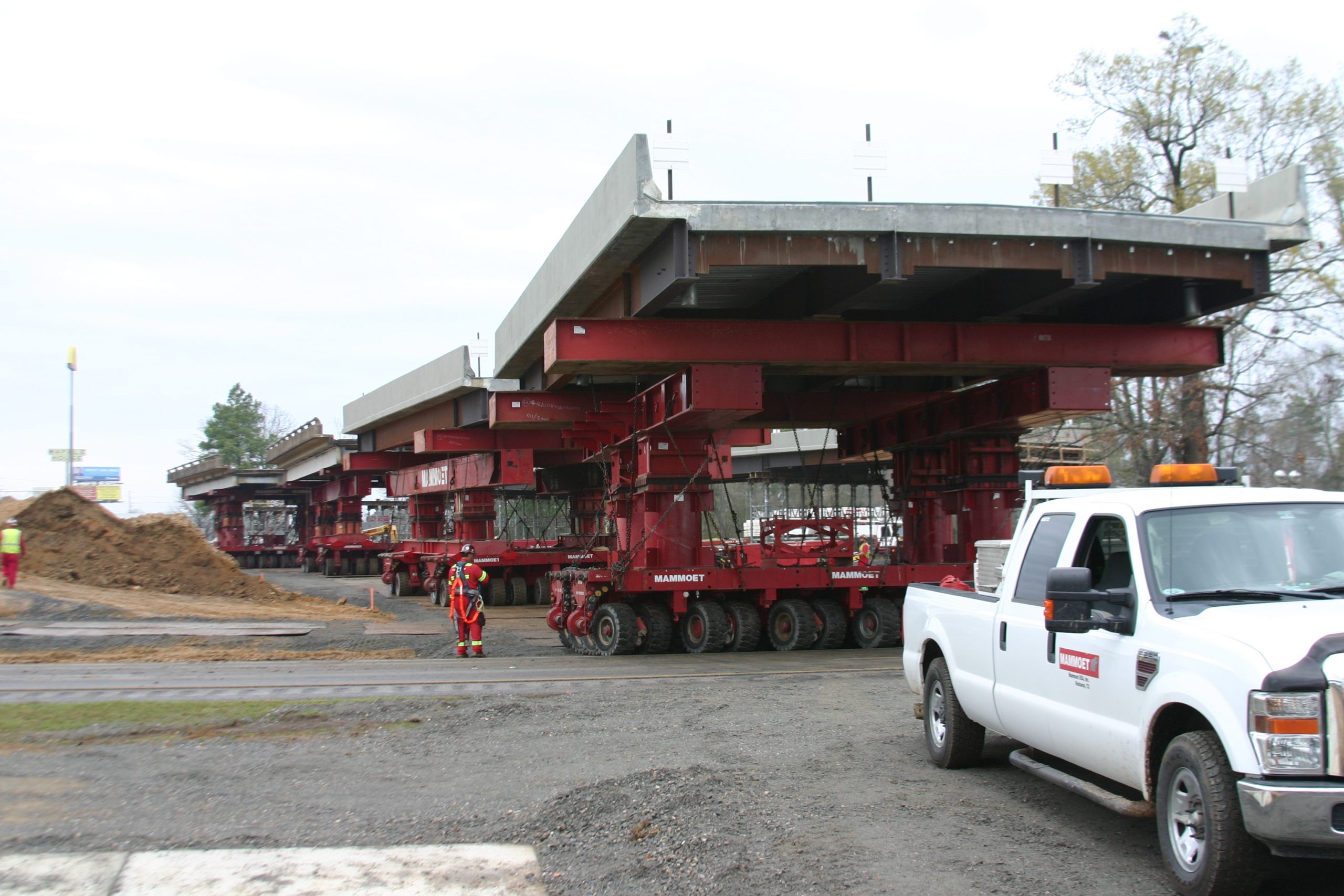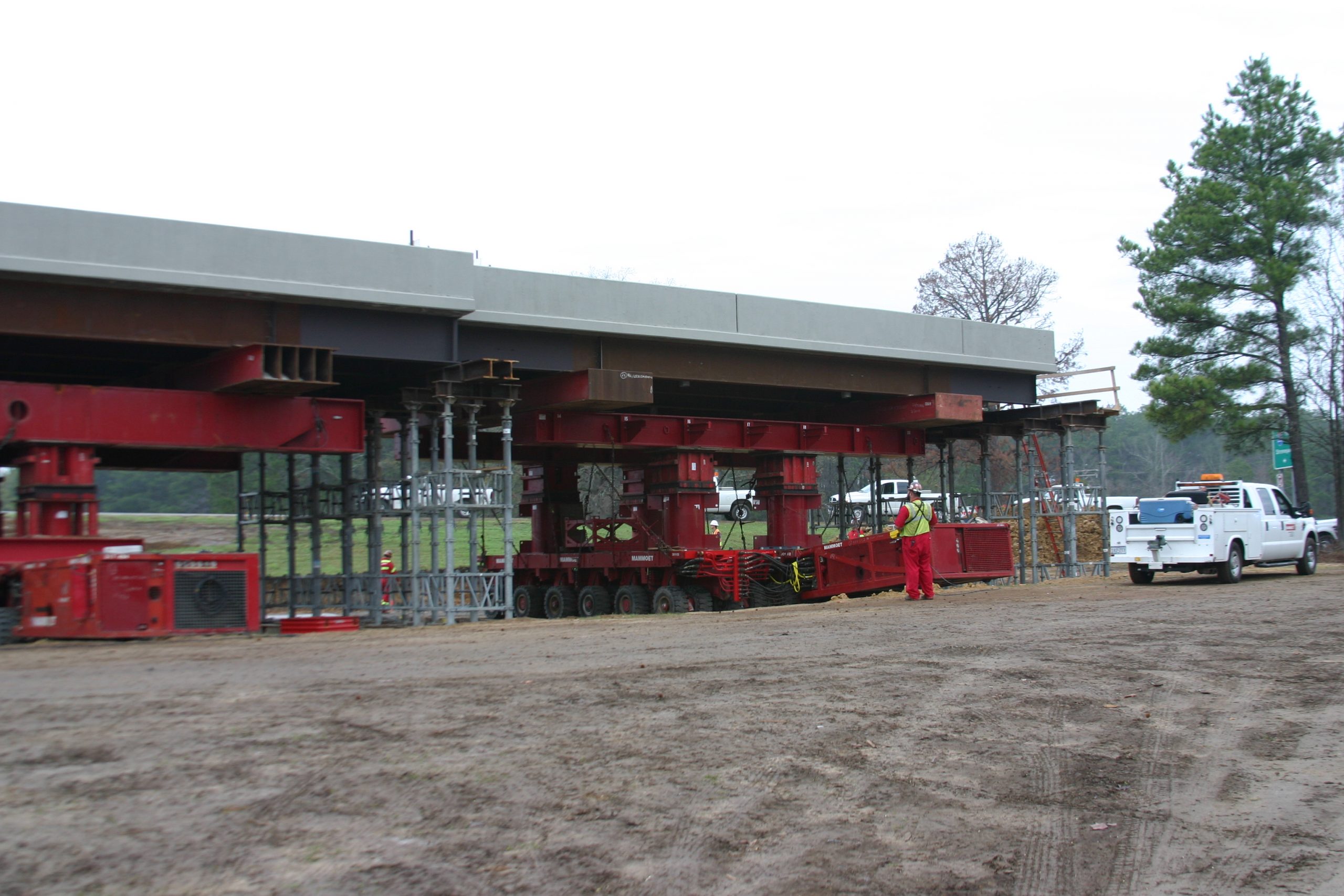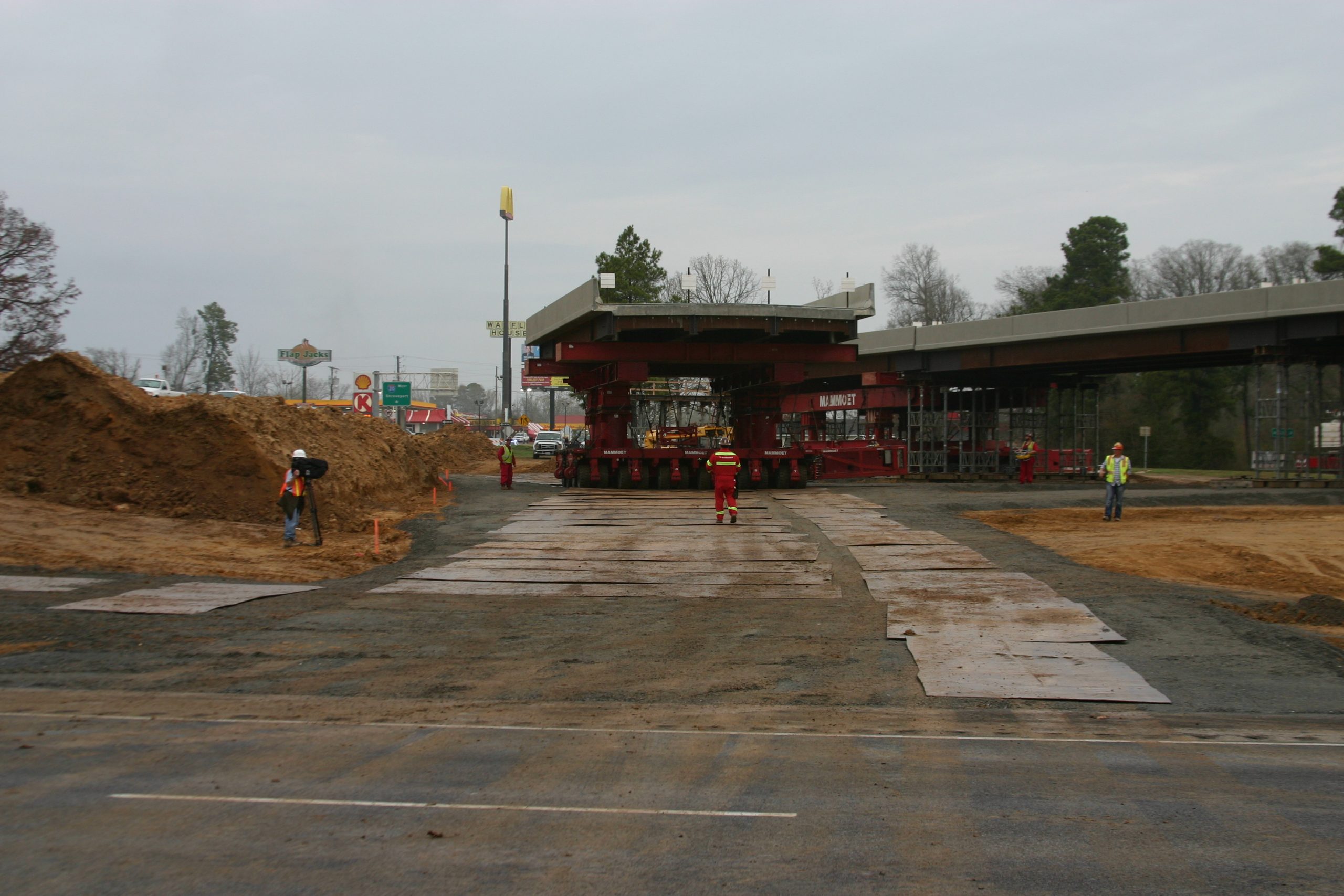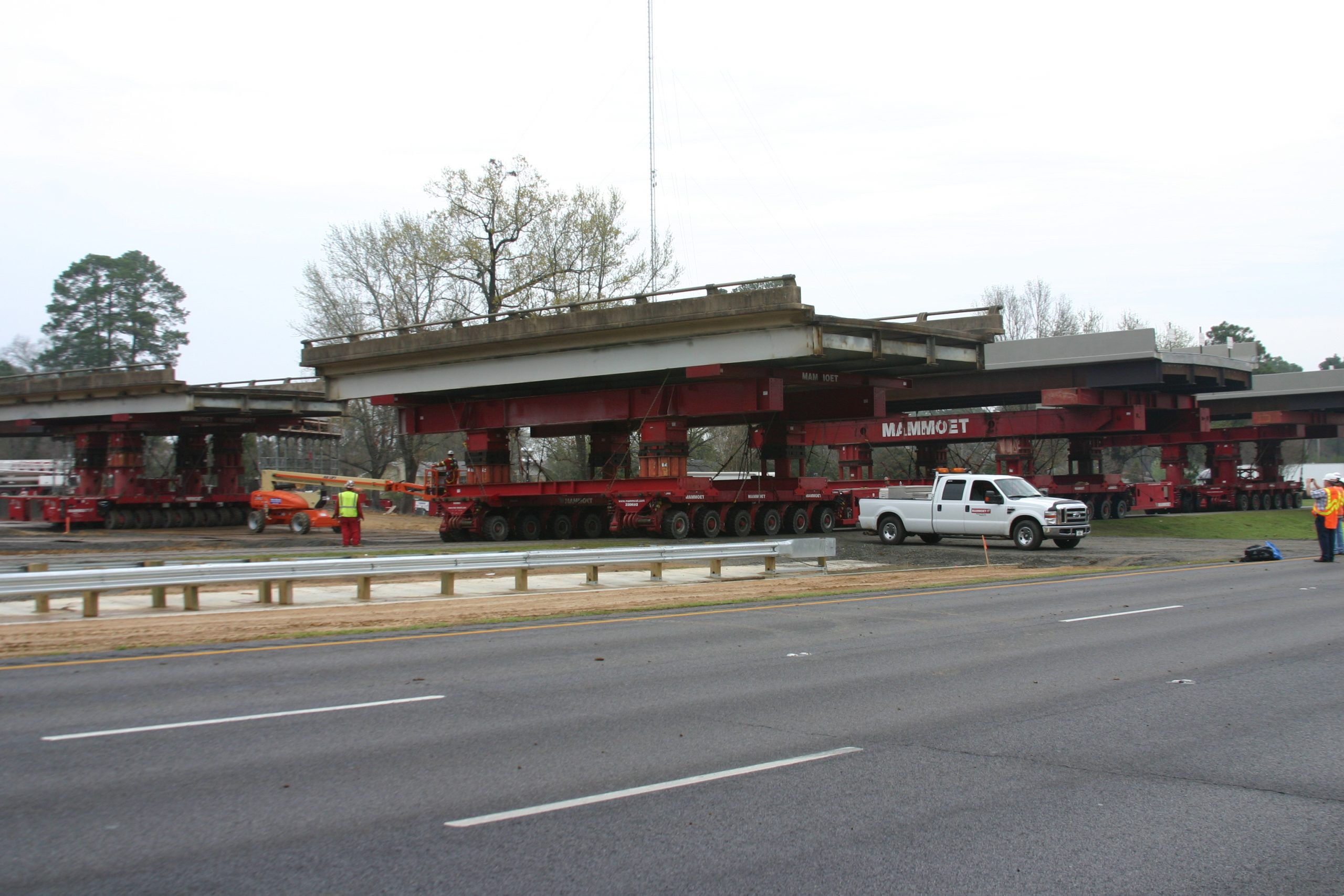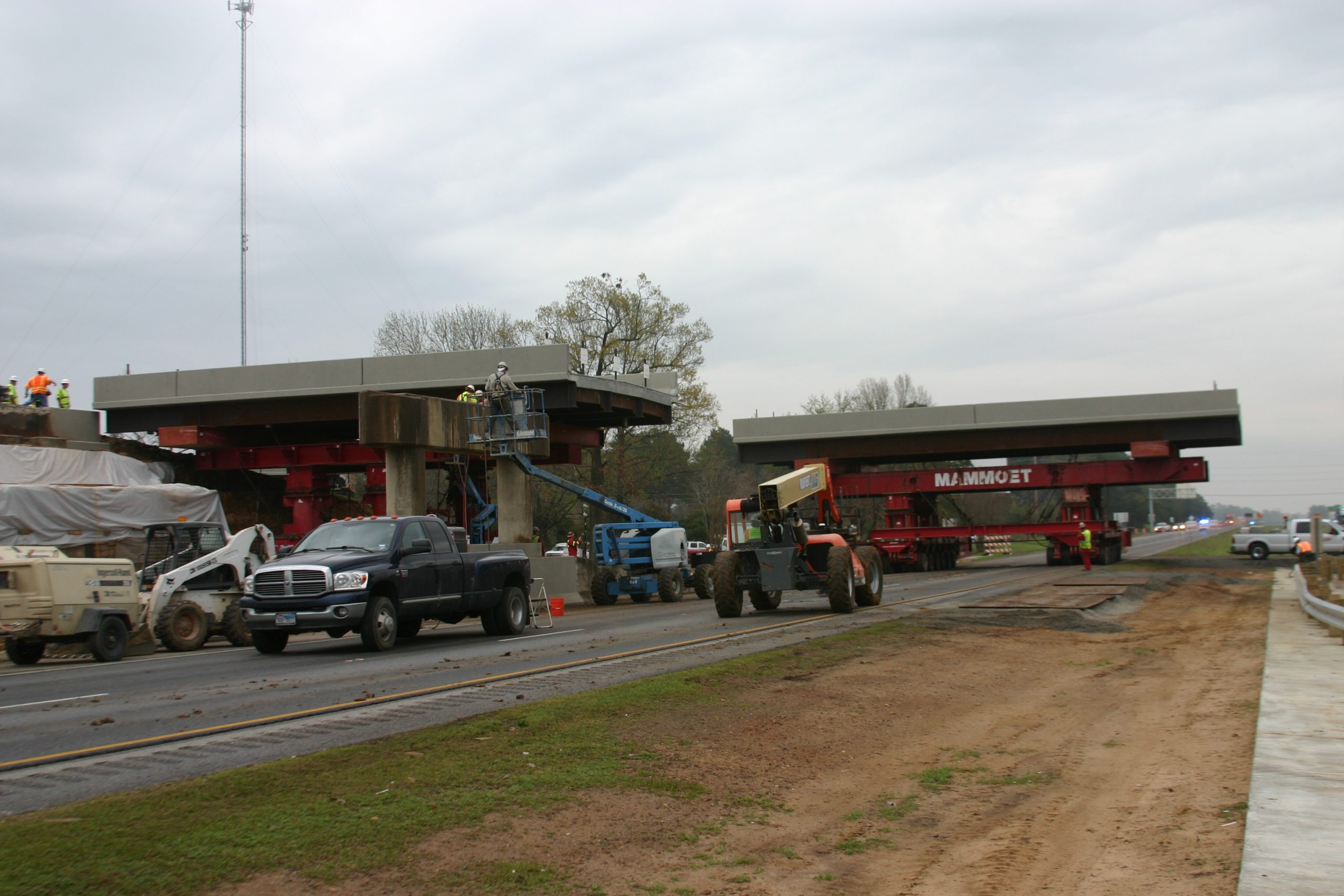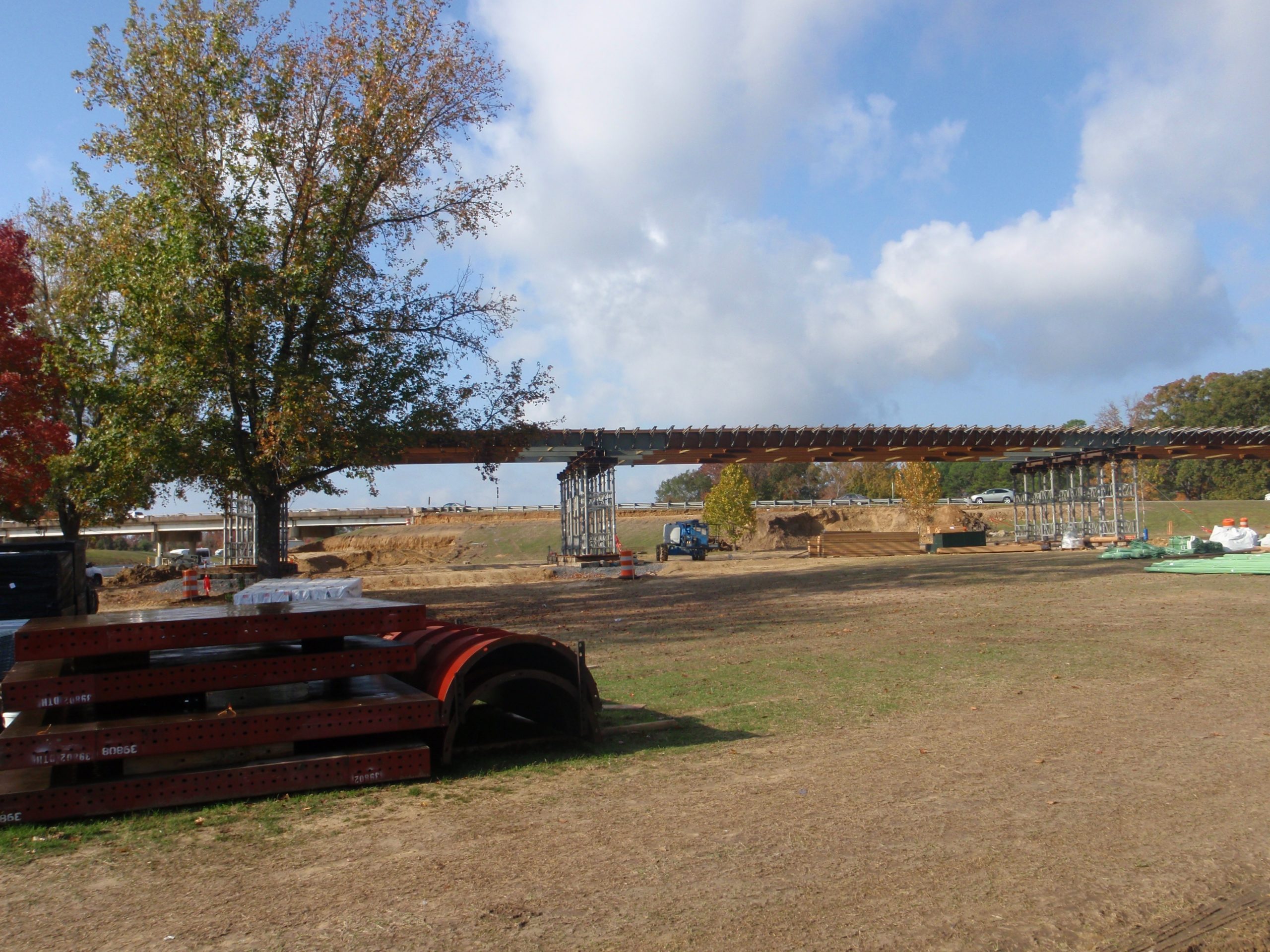State: LA
County:
Owner: State
Location: Rural
Spans: > Three-span
Beam material: Steel
Max Span Length (ft.): 85
Total Bridge Length (ft.): 260
Construction Equipment Category: SPMTs
ABC Construction Equipment: SPMT(s)
State ID Number: 25510
NBI Number: 5.37E+13
Coordinates
Latitude: 32.5109444 | Longitude: -92.1919403
Bridge Description
Project Summary:Project Location:
LA 3249 (Well Road), a rural major collector, over I-20 in Ouachita Parish in northern Louisiana
Impact Category:
Tier 2 (within 3 days)
Mobility Impact Time:
ABC: weekend closure; Conventional: one year
Primary Drivers:
reduced traffic impacts, improved work-zone safety, reduced onsite construction time, improved site constructability, improved material quality and product durability
Dimensions:
260-ft long and 30.5-ft wide four-span (50 ft - 85 ft - 70 ft - 55 ft) composite steel girder bridge; superstructure roll-in; 215-ton maximum span self-weight
Average Daily Traffic (at time of construction):
41300
Traffic Management (if constructed conventionally):
Traffic management alternative, if constructed conventionally: extended use of on- and off-ramps
Existing Bridge Description:
Built in 1963, the existing 260-ft-long, 33.5-ft-wide, two-lane non-composite steel girder bridge superstructure was deteriorated and required replacement.
Replacement or New Bridge:
The replacement superstructure has two 12-ft-wide traffic lanes and 2-ft outside offsets. The cross-section consists of four weathering steel rolled W-shape girders spaced at 8.67 ft and ranging from 2.5 ft to 3 ft in depth, with a 7.5-inch-thick cast-in-place composite deck.
Construction Method:
The superstructure spans were constructed conventionally, complete with traffic railing, on temporary steel pipe trestle supports in a staging area within the interchange. Prior to bridge closure, the existing substructure was strengthened by adding spread footings between existing pile footings at interior supports and adding abutment extensions on columns/drilled shafts at the ends of the existing abutments. The bridge and I-20 were closed on a Friday at 7 pm, and traffic detoured using the bridge on- and off-ramps. A total of four sets of self-propelled modular transporters (SPMTs) were used on the job. Two sets of SPMTs were used to individually remove two of the existing spans, and the existing abutments and interior piers were repaired as needed. The second two sets of SPMTs were then used to individually install the first two replacement spans. The process was repeated for the remaining two existing and replacement spans. Polymer concrete was placed at the abutment backwalls, and preformed silicone joint seals were installed. Standard strip seals were installed at the interior span joints. No deck overlay was applied to the bridge. The bridge was opened on Sunday evening, 10 hours ahead of the scheduled 3-day closure.A note was included in the contract plans that stated the movement method shown in the plans was for illustrative purposes only, in order to establish feasibility. The plans did not specifically require the use of SPMTs. However, the contractor was required to select an accelerated construction method and submit an installation/movement plan for LaDOTD review and approval. The awarded contractor bid a 56-hr closure over a weekend and chose to use SPMTs to remove and replace the superstructure.The contract included a lane rental fee of $5,000 per lane per hour up to a maximum of four hours per lane per day if the bridge was opened late. A fee was to be assessed at a rate of $20,000 per lane per day for any closure extending beyond four hours until the next required opening period.The contractor was required to submit and follow a Critical Path Method (CPM) Construction Schedule for this job so that all activities could be followed and the progress of each activity could be readily measured. This ensured that the project stayed on schedule and within the contract time.
Stakeholder Feedback:
In order to keep the project on schedule, it is important to stress that the contractor should submit and obtain approval of the temporary staging and movement plans as soon as possible. The LaDOTD received positive feedback from all stakeholders, including the contractor, project engineer, and the general public.
High Performance Material:
Polymer concrete approach slab nosing was used at the abutment joints.
Project Planning
Decision Making Tools:Site Procurement:
Project Delivery: Design-bid-build
Contracting: A+B bidding; Full lane closure; Lane rental
Geotechnical Solutions
Foundations & Walls: CIP substructure under trafficRapid Embankment:
Structural Solutions
Prefabricated Bridge Elements:Prefabricated Bridge Systems: FDcBs (full-width concrete-decked steel beam unit)
Miscellaneous Prefabricated:
Costs & Funding
Costs:The engineer’s estimate for the project was $3.95 million. The low bid was $3.17 million ($780,000 = 20% lower than engineer’s estimate). There were five bidders. The cost per square foot of bridge was $250 compared to $150 for conventional construction in this region in 2011.
Funding Source:
State Only
Incentive Program:
Additional Information
Downloadable Resources
Contract Plans:Specifications:
View SP_451-06-0148_proposal_sheets_A1-D-27.pdf
View SP_451-06-0148_Bid_Tabulations.pdf
View LA-WellRd-CPM-Baseline.pdf
Other Related Information:
LA-3249-Well-Road-Presentation
Summary Sheet:
LA-3249-Well-Road-Presentation
120419-ABC_New2_LA-3249-Well-Road-updated
Other Related URLs:
Louisiana Department of Transportation and Development (LaDOTD)
Contacts
Mark D. Bucci, P.E.
Bridge Design Manager
Louisiana Department of Transportation and Development
mark.bucci@la.gov
225-379-1076



